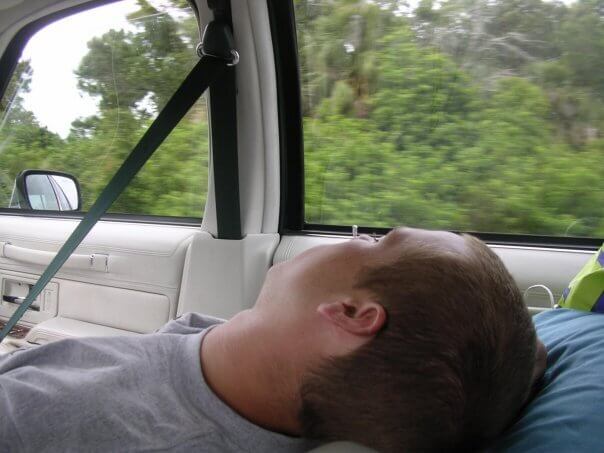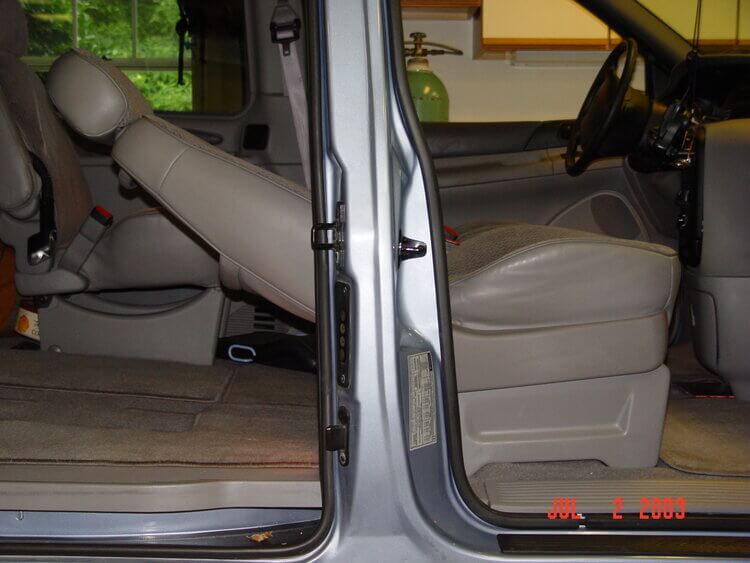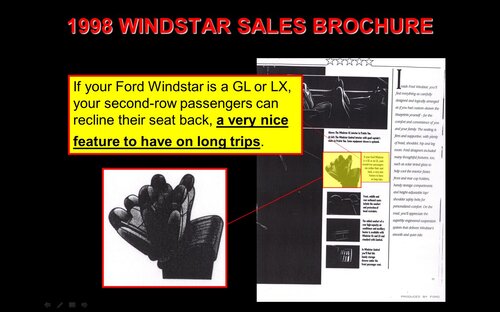
Not many Americans know this, but tilting your vehicle’s seat back to rest or take a nap will dramatically increase the risk of serious injury or death in an auto accident. It’s important to spread the word about this little known safety fact about being a passenger in cars.
What Is The Risk?
In a reclined position, a three-point restraint (lap and shoulder seat belt) becomes essentially useless because the shoulder harness moves away from the passenger. Seat belts do not work — and, in fact, can make injuries worse — if they are not properly designed (proper “seat belt geometry”) or not properly worn.
Most passengers simply assume they will be safe if they are buckled up. Few people understand that the more space between the seat belt and the passenger’s chest increases the risk of death or serious injury caused when your body either slams against the seat belt itself or “submarines” and slides beneath the seat belt.
Auto makers have known of these risks since at least the 1964 Stapp Car Crash Conference. However, car manufacturers have lobbied Congress to prevent any regulation and there are still no Federal Motor Vehicle Safety Standards (FMVSS) — federal minimum standards — governing this danger. Because there are no federal minimum standards, car makers have refused to provide warnings or alter the vehicle to eliminate or even reduce this hazard.
What Can Be Done?
There are several easy and inexpensive solutions for auto makers to eliminate or reduce the risk of harm from reclined seats:
-
Car makers could prevent seats from reclining beyond a predetermined angle while the vehicle is moving. This is the safest, but most controversial choice. This solution eliminates the risk but also eliminates consumer choice. In addition, car makers argue that it is difficult to assign a predetermined “safe” reclining angle because of the difference in human body types.
-
Car makers could design the seat belt system into the seat itself — what is known as “integrated seat belts” or “all belts to seat” (ABTS). These systems incorporate the seat belt into the seat design to create a much safer and effective “seat belt geometry.” While not completely eliminating the danger, these systems keep the seat belt placed on the body no matter where the passenger reclines the seat back. ABTS systems are much safer than restraint systems in which the seat belt is mounted to the B-pillar.
-
The cheapest and simplest solution is to warn occupants of reclined seat danger so that the occupant has the ability to decide for herself if she wishes to trade safety for comfort. Studies have shown that warnings will both inform and remind passengers of potential dangers. A warning costs virtually nothing to implement and will save lives.
-
Car makers could also incorporate a visible or audible warning — just like they already do with seat belt warning lights and chimes. Takada (a major seat belt manufacturer) patented just such a device almost 20 years ago. If GM, Ford, Chrysler or Toyota will warn you to use your seat belt, why won’t they warn you to keep your seat belt effective?
Taking a Reclined Seat Case To Trial
Langdon & Emison has received numerous landmark verdicts in cases involving dangerous reclined seats, including a record setting $59 million verdict against Toyota in Baltimore, Maryland, and a $16.94 million verdict against Ford in Jacksonville, Florida.
Reclined seat attorneys taking a case to trial must prove that the reclined seat defect caused or worsened the plaintiff’s injuries. Often times, attorneys can illustrate how only the passenger in the reclined seat suffered serious injuries, in an accident where others walk away unharmed.
Attorneys also must have a qualified team of experts who can explain the defect and injury mechanism to the jury. Your team must include (1) a vehicle design expert; (2) an accident reconstructionist; and (3) a biomechanical engineer. In addition, a qualified warnings expert should counter the auto industry standard defense that “people should know better.”




